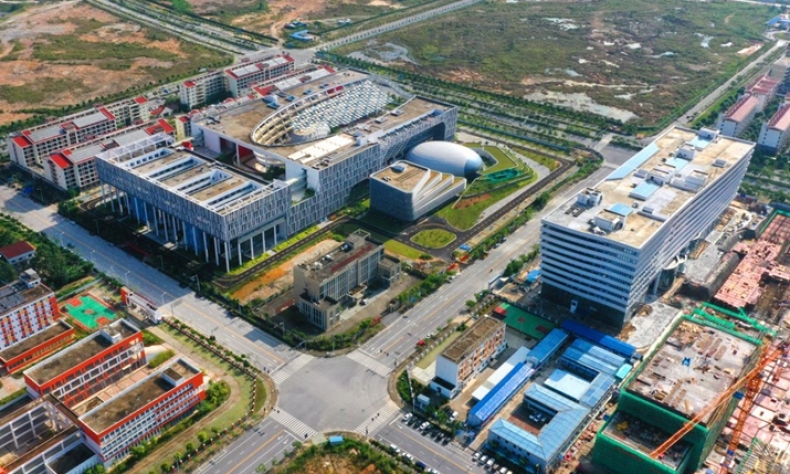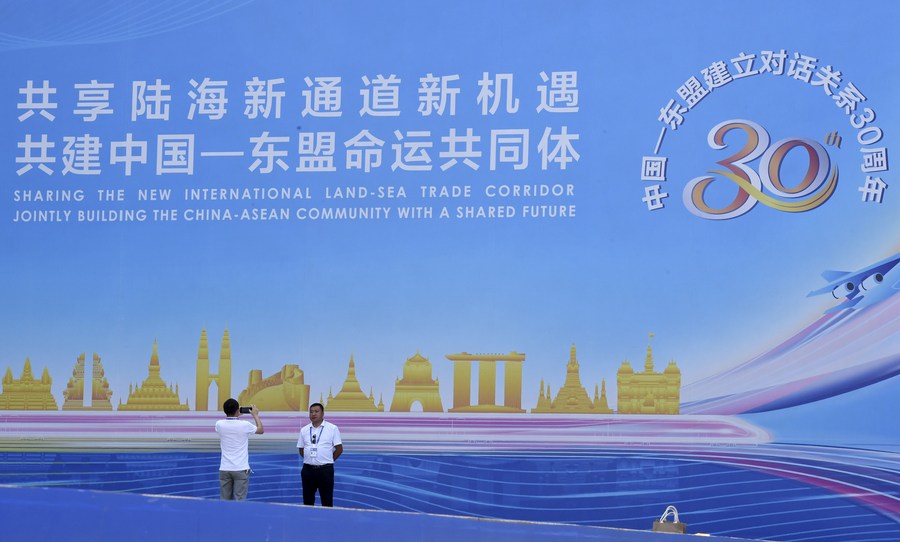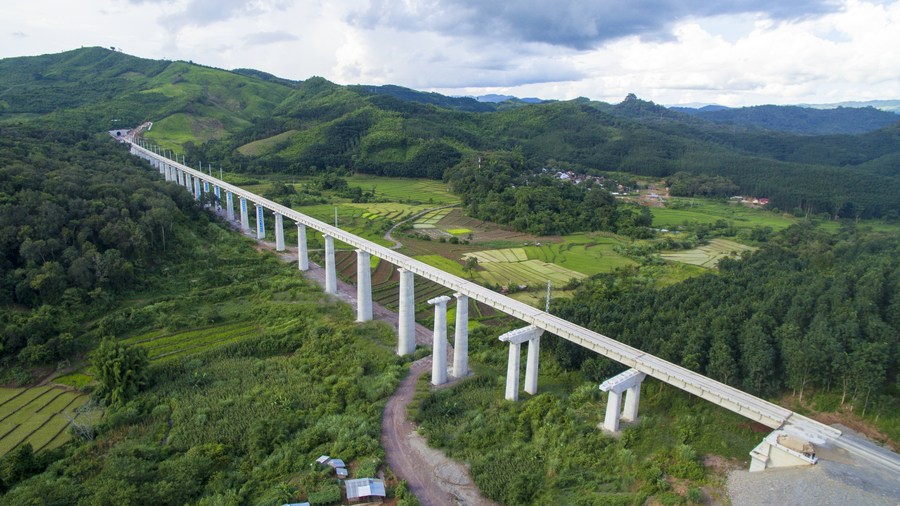Entering the Mega Free Trade Deal

ASEAN’s centrality in RCEP lies in its success in brokering the first ever FTA for China, Japan and the ROK.
The biggest ever global free trade market–the Regional Comprehensive Economic Partnership (RCEP)–came into force on January 1 after 11 signatory states submitted their respective instruments of ratification or acceptance to the RCEP depositary. These include six of the 10 ASEAN member states and all five non-ASEAN dialogue partners, more than sufficient to trigger the threshold of entry into force. Meanwhile, ASEAN member states that have yet to do so, namely Malaysia, Indonesia, Myanmar and the Philippines, are currently set to seek respective amendments to their relevant domestic legislations to make them RCEP-consistent prior to their formal parliamentary ratification.
Driven by ASEAN
This ASEAN-driven mega trade deal manifests the bloc’s strong resolve in pursuing an inclusive regional economic integration that encompasses its member states of varying levels of development. Through the augmentation of its respective free trade agreements (FTA) with the five dialogue partners in East Asia and Oceania, namely China, Japan, the Republic of Korea (ROK), Australia and New Zealand, the 15-member RCEP accounts for an estimated GDP of $25.8 trillion, equivalent to about 30 percent of the global GDP. In key areas of the bloc’s economic priorities, such as global trade in goods and services, and foreign direct investment inflows, RCEP contributes over 25 percent to the former ($12.7 trillion), and 31 percent to the latter.
The centrality of the ASEAN in RCEP lies not in its role as the initiator, but more in its success in brokering the first ever FTA for China, Japan and the ROK–the three leading Asian economies in East Asia–through RCEP. Geopolitically, ASEAN is treading the delicate balance between China and U.S. allies within RCEP, such as Japan, ROK, Australia and New Zealand. This is particularly challenging amid the escalating China-U.S. power rivalry in the Indo-Pacific.
To the 10 ASEAN member states, the oneness accrued from the ASEAN Community prior to the inception of RCEP has proven a boon for the least developed countries (LDC) within the bloc, namely Cambodia, Laos and Myanmar. In reality, inclusion of individual LDCs in any economic groupings has always been a tall order. But with the inclusive oneness of ASEAN, induction of the said LDCs into RCEP alongside the other developing ASEAN member states, will turn out to be a useful tool to bridge the gap of economic development among the 15 signatory countries in RCEP. The LDCs in RCEP, aided by massive tariff reductions or exemptions on a gamut of goods and services, as well as the harmonization of the rules-of-origin, are henceforth granted a golden opportunity to enhance their respective competitiveness in wooing potential investors. So long as the LDCs remain amenable to needs for domestic economic reforms so as to make them RCEP-consistent, the transformation of these economic backwaters into new destinations for investors is not at all a distant dream.

A case in point, Laos, one of the three LDCs in RCEP, is scheduled to graduate from the LDC category, alongside two other non-RCEP signatory countries–Bangladesh and Nepal, in 2026. Though it is destined to lose its exclusive access to certain international support measures in particular in the areas of development assistance and trade, the benefits it accrued as a signatory member of RCEP are believed to be sufficient to outweigh what it is likely to lose upon “graduation.” On the other hand, the “post-graduation” Nepal and Bangladesh are anticipated to face a much more challenging economic situation bereft of the RCEP benefits, as compared to Laos.
Furthermore, inauguration of the China-Laos Railway last December has transformed the land-locked country to one that is land-linked via the rail connectivity. The economic dividends to be accrued from its market access to the neighboring China and Peninsular Southeast Asia via rail link will serve as an impetus to both Cambodia and Myanmar–the other two neighboring LDCs of RCEP–which have yet to complete their respective rail links in the Pan-Asian Railway network, spanning between Kunming, China and Singapore.
China’s role
China, the biggest economy in the 15-member economic partnership remains the bright spot of the RCEP market. In 2020, while China and the world were bearing the full brunt of the ravaging COVID-19, China’s imports and exports to the other 14 RCEP trading partners accounted for 31.7 percent of its total imports and exports. In the first half of 2021, China’s imports and exports to all the RCEP partners combined made a remarkable leap of 22.7 percent year on year, thus paving way for a good start of the inauguration of RCEP.
However, from the perspective of the West, this is portrayed as a manifestation of Chinese dominance. Centrality of ASEAN in RCEP has time and again been called in question. Having been obsessed with the paranoia against China’s growing geopolitical influence, the RCEP sceptics and naysayers were quick to vilify RCEP as an outgrowth of ASEAN and a hegemonic tool for ushering in the so-called “Pax-Sinica” era, binding the region into a China-led global order. The coming to fruition of RCEP was greeted cynically with such taglines as “Might-Is-Right Global Trading Era,” visibly revealing how perturbed the Western pundits could be in the face of significant Chinese role in the ASEAN-driven initiative.

Bearing such prejudice in mind, the relentless critics went further to raise the bar in scrutinizing RCEP, a multilateral rules-based free trade pact consistent with the international benchmark. Such compliance is discounted as mere adherence to the traditional rules, but is deemed lacking in depth and breadth of free trade required to meet the criteria of establishing a high-level free trade area. From this perspective, comparative benchmarking against the Comprehensive and Progressive Trans-Pacific Partnership (CPTPP) agreement is deliberately made to belittle RCEP.
The exclusion of such new concerns as state-owned enterprises, labor standards, government procurement and environmental protection in RCEP was made the convenient rationale to justify the sceptics’ criticisms against the mega trade deal in Asia Pacific.
Little had they been cognizant of the necessity of being inclusive to accommodate the varying levels of economic development among the RCEP signatory countries. The insistence of including the said new criteria as the entry qualifications to any FTA, RCEP included, would only perpetually alienate the less developed economies from the bloc in the name of pursuing high level rules reform for free trade.
By so doing, economic groupings are virtually nothing more than exclusive clubs for the developed economies. Obviously, this has not been the choice of RCEP since the ideal was first mooted by ASEAN. In the collective pursuit of shared future in the region, ASEAN, the cornerstone of RCEP, will continue to steadfastly embrace inclusiveness in their common interests. This would shape the trajectory of RCEP in years to come. After all, the proof of the pudding is in eating. Developing economies in the fold of RCEP have no reason or whatsoever to placate the West by forsaking what is deemed crucial to them and the region.
The author is chairman of the Center for New Inclusive Asia in Malaysia.
 Facebook
Facebook
 Twitter
Twitter
 Linkedin
Linkedin
 Google +
Google +










